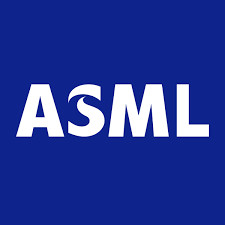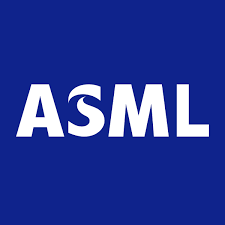
ASML, a powerhouse in the semiconductor sector and on the stock market, needs to think smaller. Or even bigger.
In its effort to construct minuscule circuits on computer chips used in everything from phones and laptops to cars and artificial intelligence, it is building machines the size of double-decker buses that weigh over 200 tonnes.
The corporation has had a good decade, with its stock rising 1,000 percent to almost 200 billion euros in value as it swept up the majority of the world's lithography sector.
It's currently planning to launch a new $400 million machine for next-generation chips, which it thinks will be its flagship by the late 2020s but is still an engineering challenge for now.
Executives at ASML's headquarters in the Dutch town of Veldhoven told Reuters a prototype was on track to be completed in the first half of 2023. They said the company and longtime R&D partner IMEC were setting up a test lab on the spot - a first - so top chipmakers and their suppliers can explore the machine's properties and prepare to use production models as early as 2025.
However, with investors expecting continued dominance and growth to support ASML's 35 times 2021 earnings valuation, there is little room for error if the business runs into technical or supply-chain issues.
"Every check is green right now," said Christophe Fouquet, head of EUV programs at ASML. "But, you know, we still have to see it all (assembled) together."
Extreme ultraviolet (EUV) is the light wavelength used by ASML's most advanced equipment.
The project's success is also crucial for ASML's customers, chipmakers scrambling to increase production amid a global scarcity. Intel of the United States, Samsung of South Korea, and TSMC of Taiwan, the largest, manufacture chips for Apple, AMD, and Nvidia.
The new technology, known as a "High-NA" version of EUV, could provide a major advantage to some chipmakers, according to industry expert Dan Hutcheson of VLSI Research, who is not engaged with the ASML research.
"It's a bit like who's got the best gun," he said.
"So either ASML makes it happen or they don't make it happen," he added. "But if they make it happen, and you don't have your orders and you miss out on this, you've immediately made yourself non-competitive."
He claimed that in the late 2010s, TSMC outperformed its competitors by integrating ASML's EUV machines first, a mistake that Intel CEO Pat Gelsinger has promised not to repeat with High-NA.
High-NA promises a 66 per cent reduction in circuitry on a chip, thanks to lithography. In chipmaking, smaller is preferable because the more transistors packed into a given space, the faster and more energy efficient a chip can be.
Circuitry is already approaching the atomic level, prompting concerns that "Moore's Law," the famous 1960s observation that the number of transistors on a microchip doubles every two years, may be coming to an end.
"If they (ASML) don't succeed it will become difficult to continue with Moore's Law," said Jos Versteeg, an analyst at Dutch-based bank InsingerGilissen, though he noted engineers had defied similar doubts in the past.
(Source:www.channelmewsasia.com)
In its effort to construct minuscule circuits on computer chips used in everything from phones and laptops to cars and artificial intelligence, it is building machines the size of double-decker buses that weigh over 200 tonnes.
The corporation has had a good decade, with its stock rising 1,000 percent to almost 200 billion euros in value as it swept up the majority of the world's lithography sector.
It's currently planning to launch a new $400 million machine for next-generation chips, which it thinks will be its flagship by the late 2020s but is still an engineering challenge for now.
Executives at ASML's headquarters in the Dutch town of Veldhoven told Reuters a prototype was on track to be completed in the first half of 2023. They said the company and longtime R&D partner IMEC were setting up a test lab on the spot - a first - so top chipmakers and their suppliers can explore the machine's properties and prepare to use production models as early as 2025.
However, with investors expecting continued dominance and growth to support ASML's 35 times 2021 earnings valuation, there is little room for error if the business runs into technical or supply-chain issues.
"Every check is green right now," said Christophe Fouquet, head of EUV programs at ASML. "But, you know, we still have to see it all (assembled) together."
Extreme ultraviolet (EUV) is the light wavelength used by ASML's most advanced equipment.
The project's success is also crucial for ASML's customers, chipmakers scrambling to increase production amid a global scarcity. Intel of the United States, Samsung of South Korea, and TSMC of Taiwan, the largest, manufacture chips for Apple, AMD, and Nvidia.
The new technology, known as a "High-NA" version of EUV, could provide a major advantage to some chipmakers, according to industry expert Dan Hutcheson of VLSI Research, who is not engaged with the ASML research.
"It's a bit like who's got the best gun," he said.
"So either ASML makes it happen or they don't make it happen," he added. "But if they make it happen, and you don't have your orders and you miss out on this, you've immediately made yourself non-competitive."
He claimed that in the late 2010s, TSMC outperformed its competitors by integrating ASML's EUV machines first, a mistake that Intel CEO Pat Gelsinger has promised not to repeat with High-NA.
High-NA promises a 66 per cent reduction in circuitry on a chip, thanks to lithography. In chipmaking, smaller is preferable because the more transistors packed into a given space, the faster and more energy efficient a chip can be.
Circuitry is already approaching the atomic level, prompting concerns that "Moore's Law," the famous 1960s observation that the number of transistors on a microchip doubles every two years, may be coming to an end.
"If they (ASML) don't succeed it will become difficult to continue with Moore's Law," said Jos Versteeg, an analyst at Dutch-based bank InsingerGilissen, though he noted engineers had defied similar doubts in the past.
(Source:www.channelmewsasia.com)





